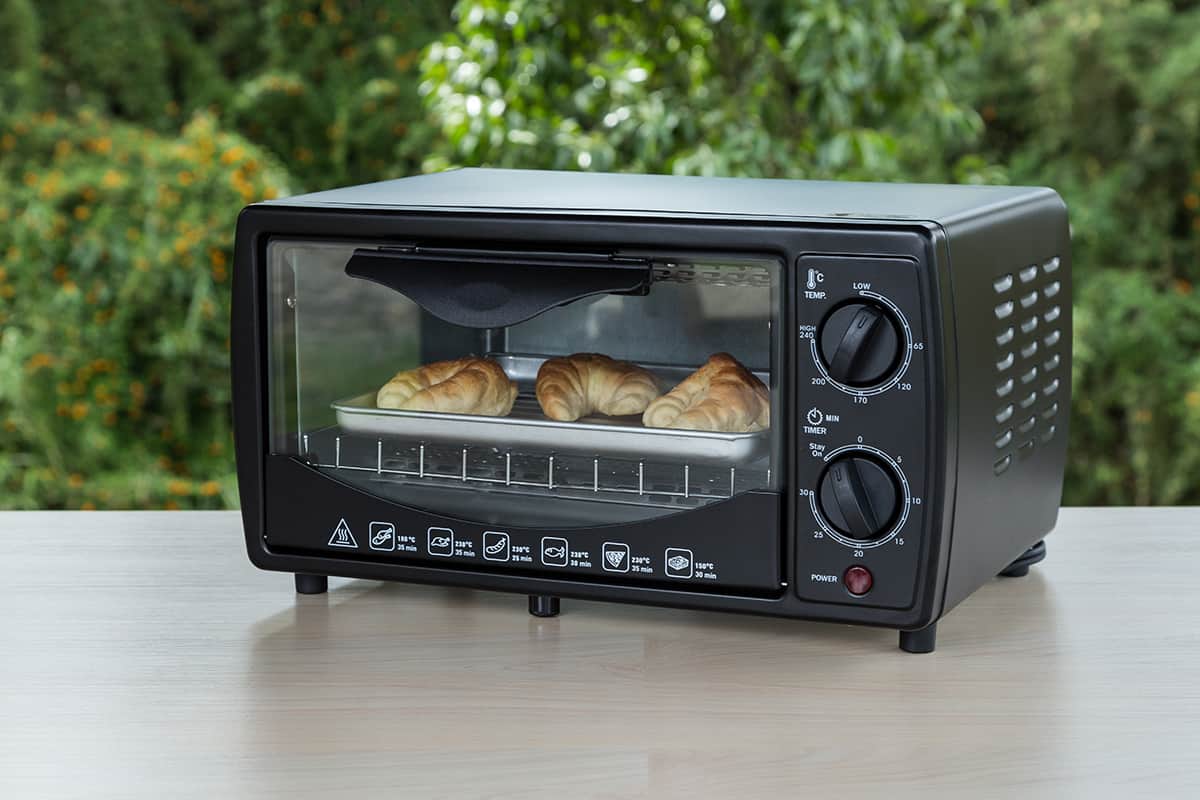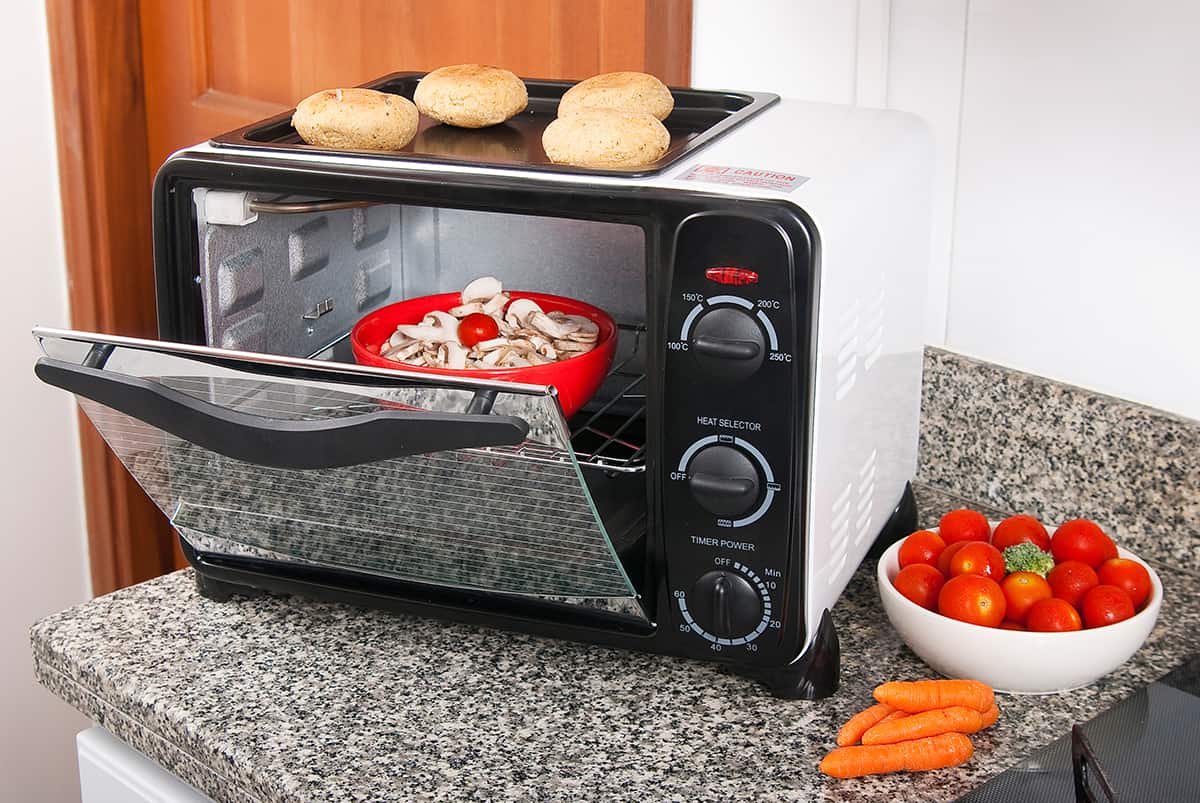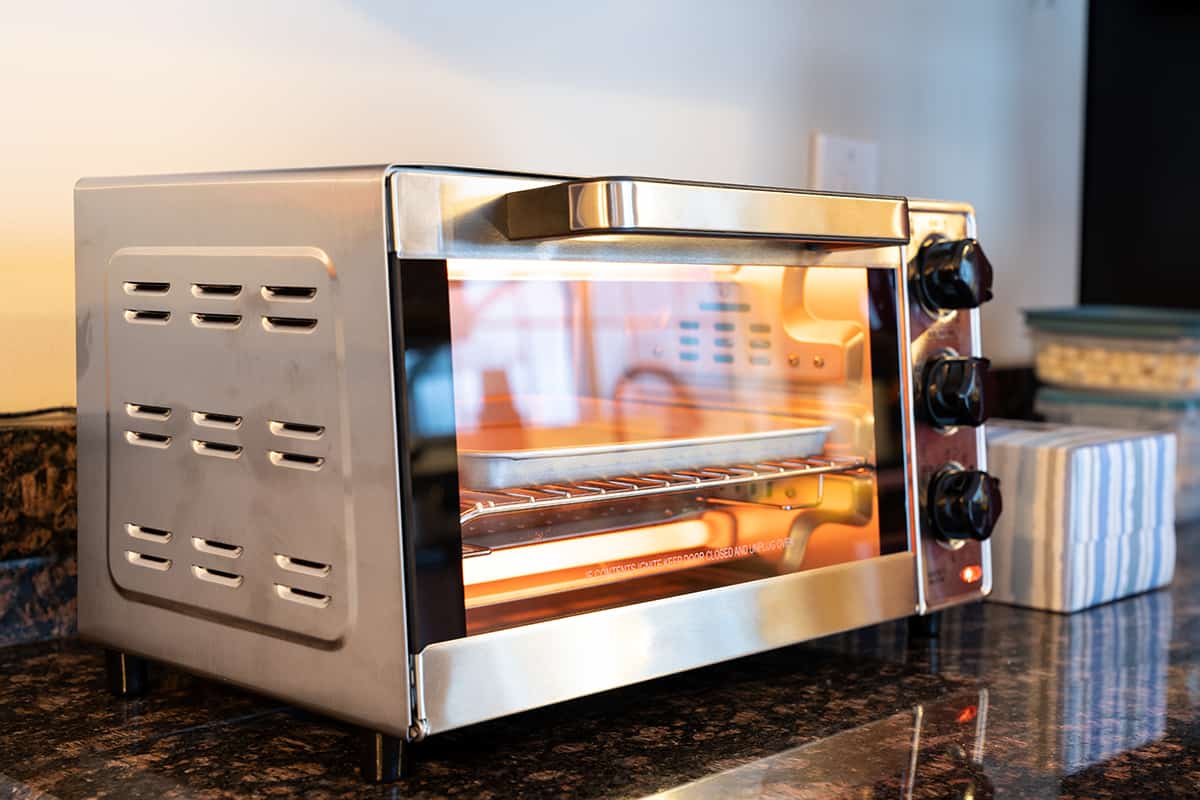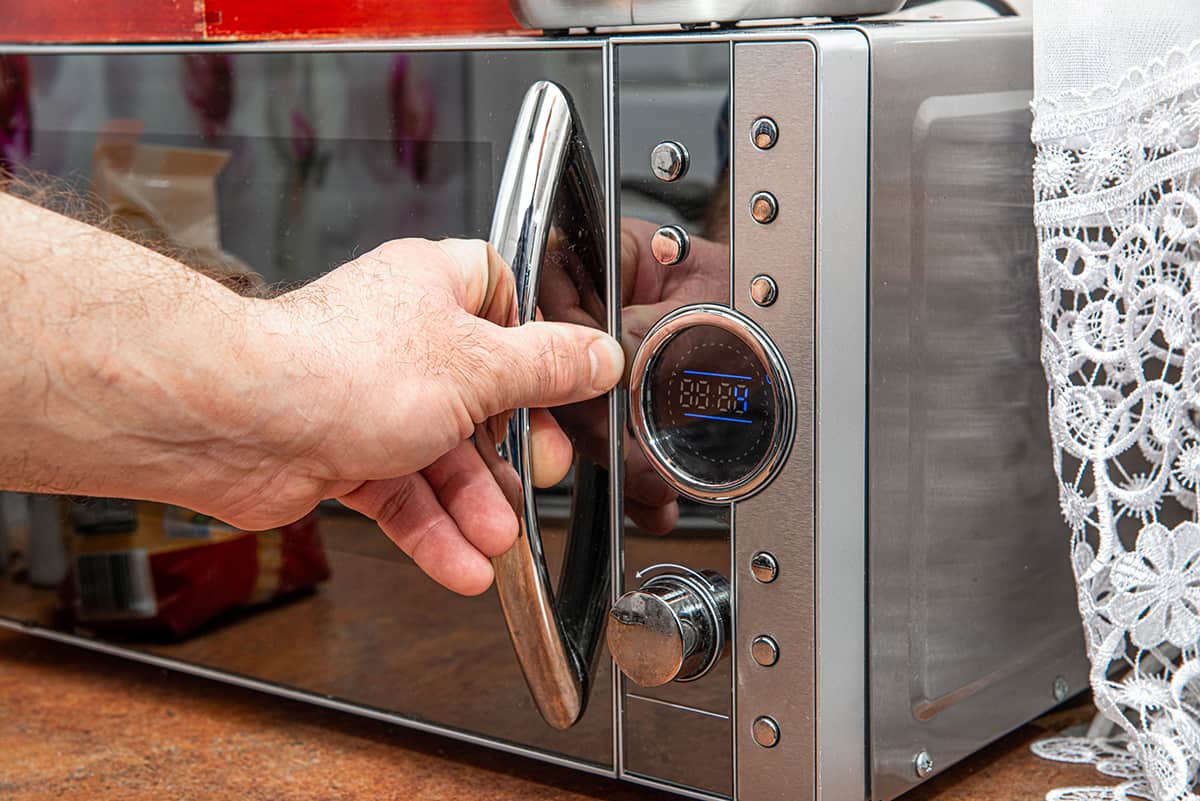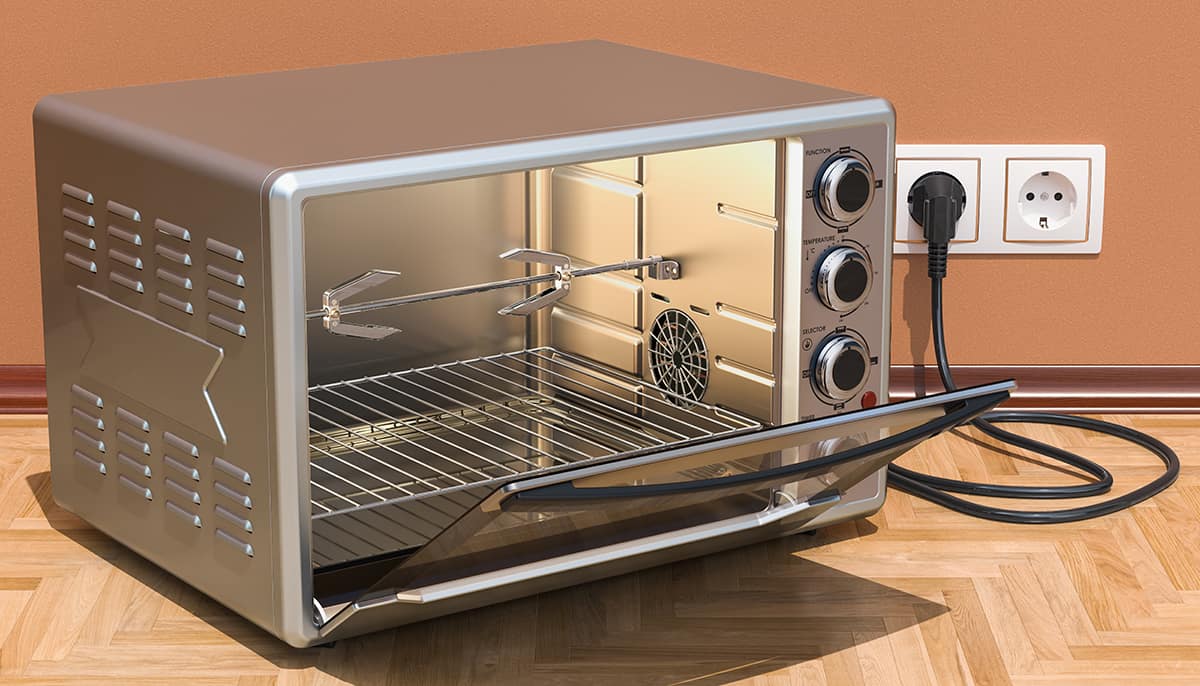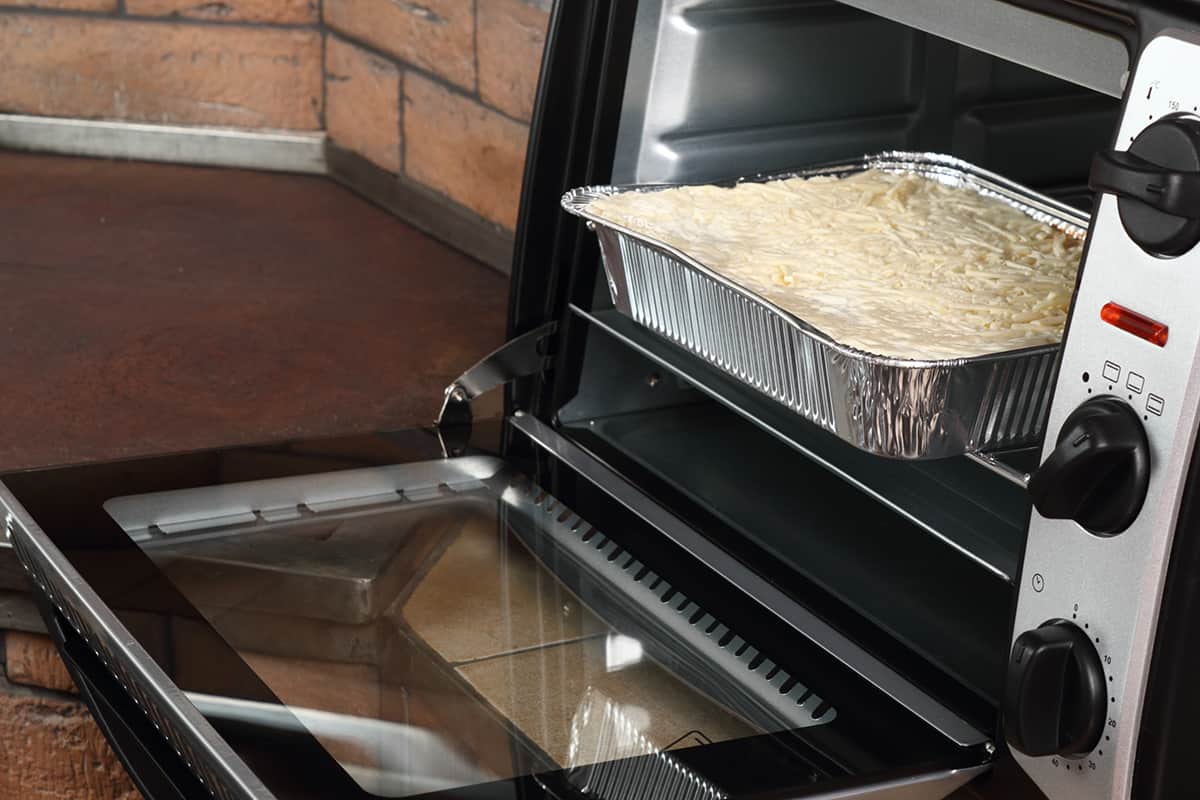Toaster ovens are versatile kitchen appliances that can cook a wide range of delicious dishes. They are compact, easy to use, and quite popular. Understanding how much power a toaster oven uses can help you make informed decisions about energy efficiency and your electricity bill.
A toaster oven uses around 1,200 to 1,800 watts of power. The amount of energy it consumes depends on the model, size, and cooking mode.
In this guide, we will explore the power consumption of toaster ovens and how different cooking modes affect energy use.
Basic Principles of Electricity
To better understand toaster oven power consumption, let’s first learn some basic principles of electricity.
Understanding voltage, current, and power
Voltage is like the force that pushes electricity through wires, while current is the amount of electricity flowing (measured in amps). Power, measured in watts, is the result of multiplying voltage and current.
Calculating energy consumption
Energy consumption is measured in kilowatt-hours (kWh). To find out how much energy an appliance uses, multiply its power (watts) by the hours it operates, then divide by 1,000.
Power Ratings of Toaster Ovens
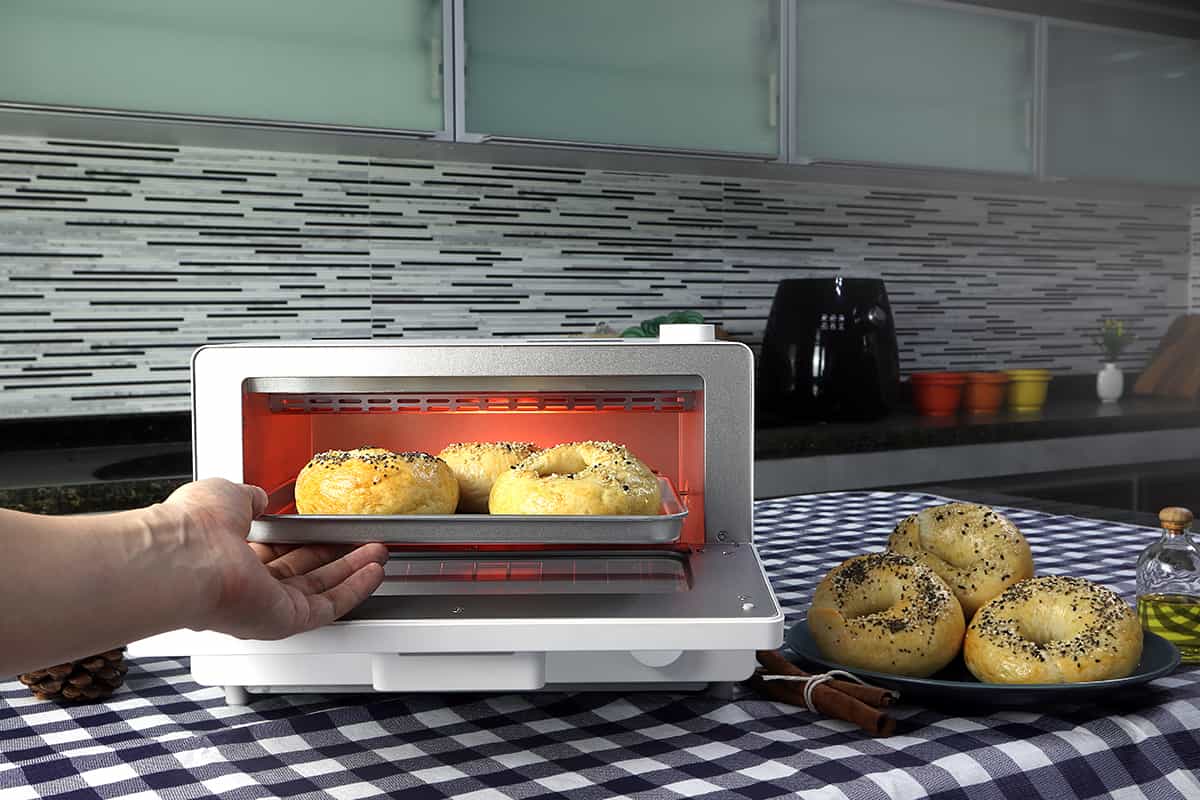
Toaster ovens come with different power ratings, which tell you how much electricity they use. Below, we’ll look at the standards, variations, and specifications related to toaster oven power.
Industry standards
Most toaster ovens have power ratings between 1200 and 1800 watts. Smaller toaster ovens usually use less power, while larger ones with more functions might use more. These numbers help you compare different toaster ovens and understand their energy use.
Variations among models
Power ratings can vary depending on the toaster oven model and brand. Some high-end models may use more power to achieve faster cooking times or offer more advanced features. It’s essential to look at the specific power rating of a toaster oven before you buy it.
Manufacturer specifications
The power rating of a toaster oven is usually listed on the packaging or in the user manual. You can also find it on the manufacturer’s website or by searching for the model number online. This information helps you determine how much electricity the toaster oven will use and allows you to compare it with other appliances in your home.
Factors Influencing Power Consumption
Many factors influence how much power a toaster oven uses. Let’s discuss how elements like size, capacity, cooking function, temperature settings, and duration of cooking can affect energy consumption.
1. Size and capacity
Larger toaster ovens typically use more power than smaller ones because they have more space to heat. A bigger toaster oven might be necessary for larger families, but choosing a smaller one can save energy if you mainly cook for one or two people.
2. Cooking function
Different cooking modes or functions, such as toasting, baking, broiling, and roasting, can affect power consumption. Understanding which modes use more or less energy can help you make smarter choices when using your toaster oven.
3. Temperature settings
Higher temperature settings require more energy to maintain. Cooking at lower temperatures when possible can help save energy. Some recipes may also work well with shorter cooking times at higher temperatures, which can balance out energy use.
4. Duration of cooking
The longer you use your toaster oven, the more energy it consumes. To save power, try to cook multiple items at once or cook in batches. This can help minimize the amount of time your toaster oven is on and reduce energy consumption.
5. Maintenance and cleanliness
A clean toaster oven works more efficiently, using less power to heat up and maintain temperature. Regularly cleaning your toaster oven, including the crumb tray and heating elements, can help improve its performance and reduce energy consumption.
Power Consumption in Different Cooking Modes
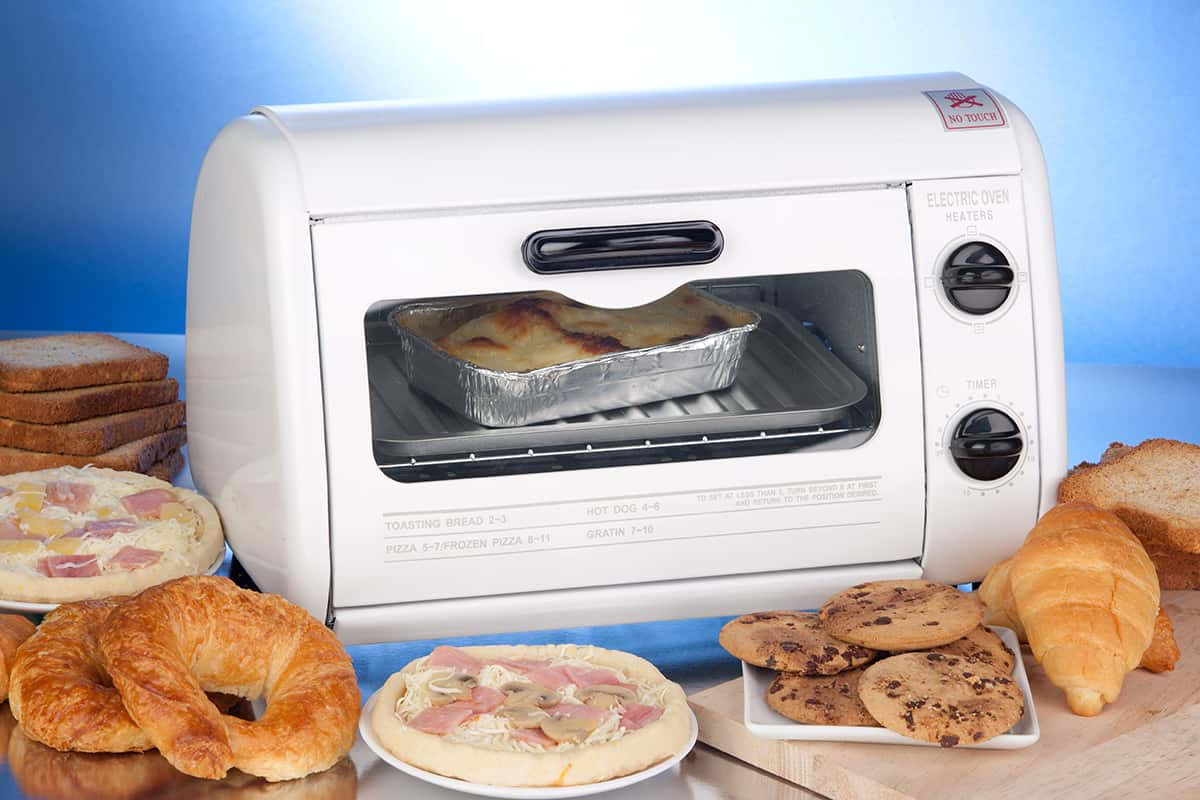
Different cooking modes in a toaster oven can affect how much power it uses. In this section, we’ll explore the power consumption of various cooking modes, including toasting, baking, broiling, roasting, and convection cooking.
1. Toasting
Toasting usually requires the least amount of power among the cooking modes. The heating elements are used mainly to brown bread slices or bagels. Since toasting takes a short time, the overall energy consumption is relatively low.
2. Baking
Baking in a toaster oven involves consistent heat from the top and bottom elements. This mode often requires more power than toasting because it needs to maintain a steady temperature for a longer time.
3. Broiling
Broiling uses high heat from the top element to cook food quickly. While it may consume more power than toasting or baking, broiling is a fast cooking method, which means the toaster oven is on for a shorter period.
4. Roasting
Roasting typically requires a high temperature and a longer cooking time than other modes. The power consumption for roasting can be higher because the toaster oven needs to maintain the temperature consistently.
5. Convection cooking
Convection toaster ovens use a fan to circulate hot air, which helps food cook faster and more evenly. This feature may increase power consumption slightly, but the overall energy savings can be significant since the cooking time is reduced.
Cost Implications of Toaster Oven Power Consumption
In this section, we’ll discuss how to estimate energy costs, compare utility rates, and understand the effects on your monthly bills.
1. Estimating energy costs
As stated previously, the average wattage of a toaster oven falls between 1200 and 1800 watts. Assuming a kWh of energy costs 23¢, we can estimate how long it takes to run a typical toaster oven for 1 hour.
-
- Cost = ((Watts × Hours) ÷ 1000) × 23¢
- Cost = (([Between 1200 and 1800 Watts] × 1) ÷ 1000) × 23¢
- Cost = [Between 1.2 and 1.8 kWh] × 23¢
- Cost = Between 27.6¢ and 41.4¢ per hour
2. Comparing utility rates
Electricity rates vary depending on where you live and your utility provider. Understanding your local rates can help you make better decisions about energy use. You may also want to consider switching to a provider with lower rates or a renewable energy plan to save money and reduce your environmental impact.
3. Impact on monthly bills
While using a toaster oven can be more energy-efficient than a full-size oven, it still adds to your electricity bill. Being mindful of your toaster oven’s power consumption and using it efficiently can help lower your monthly energy costs. Remember to compare different appliances and choose the most energy-efficient options to save money in the long run.
Comparing Toaster Ovens to Other Appliances
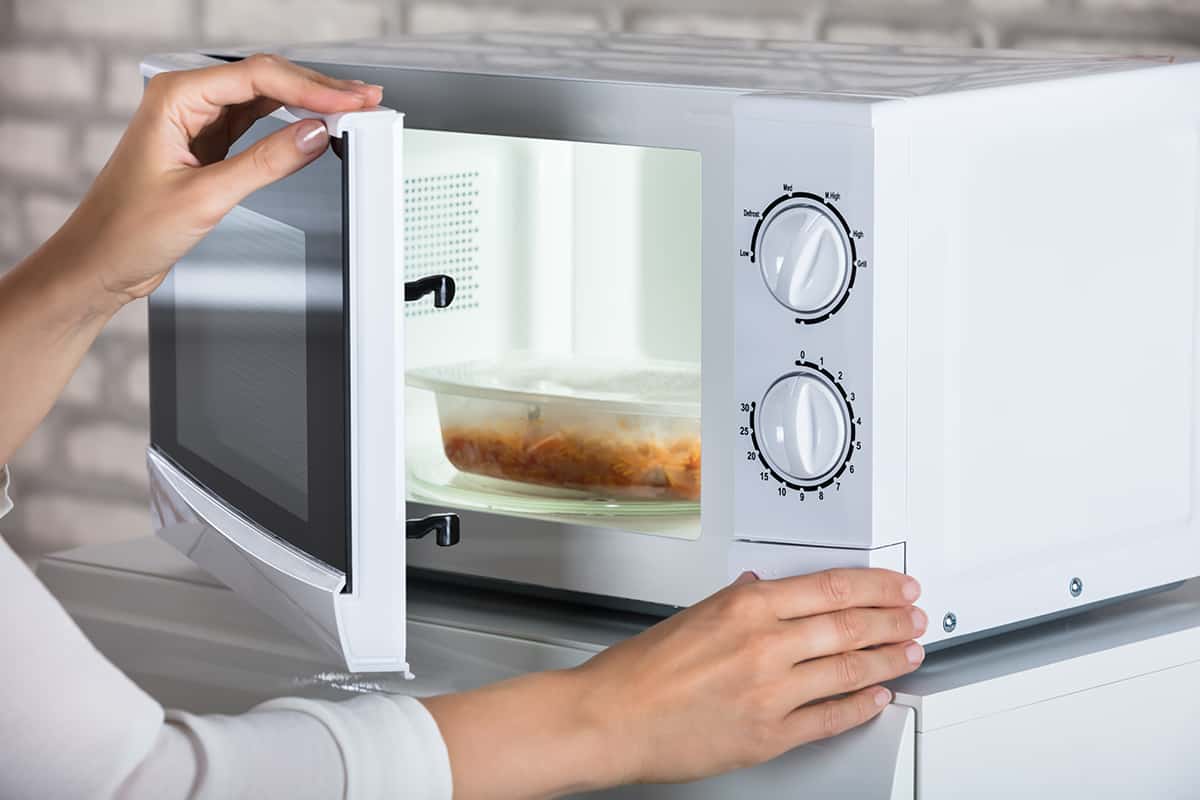
Comparing the power consumption of toaster ovens to other appliances can help you decide which one is best for your needs. Let’s explore how toaster ovens stack up against traditional ovens, microwaves, and air fryers in terms of average wattage and energy efficiency.
1. Electric range
Regular ovens usually have a power rating between 2000 and 5000 watts, depending on their size and type. They can consume more energy than toaster ovens because they heat a larger space and often take longer to cook food.
2. Microwaves
Microwaves typically use 500 to 1200 watts of power, making them more energy-efficient for certain tasks like reheating leftovers or cooking small dishes. However, microwaves may not be the best choice for all types of cooking, such as baking or browning food. Toaster ovens offer more versatility in this regard.
3. Air fryers
Air fryers generally have a power rating between 800 and 1800 watts. They use hot air circulation to cook food with little to no oil, making them a healthier alternative to deep frying.
These trendy appliances consume about the same amount of energy as a toaster oven, but they cook food quickly. Plus, they’re ideal for preparing crispy, fried-like dishes.
